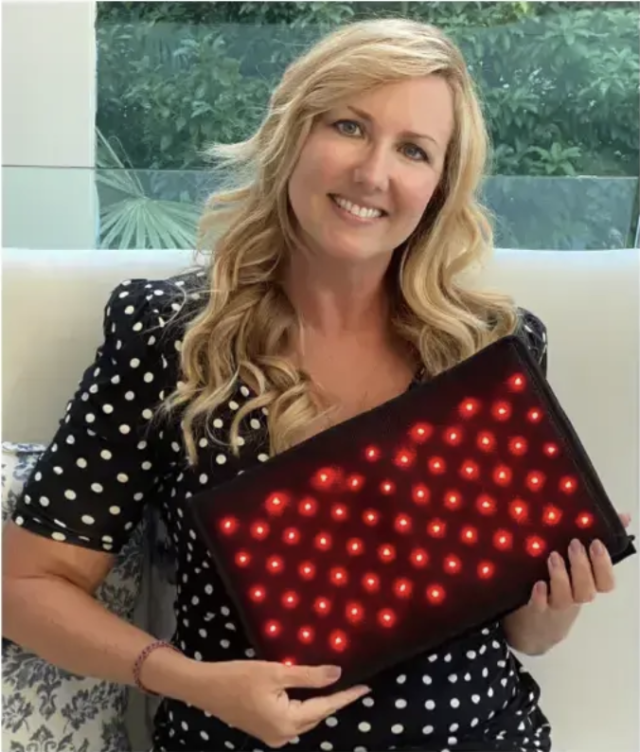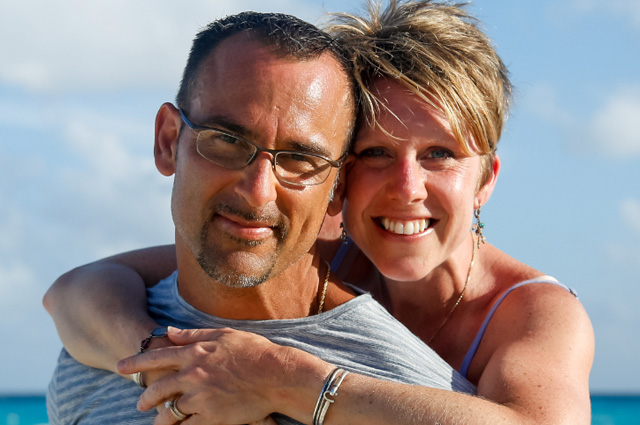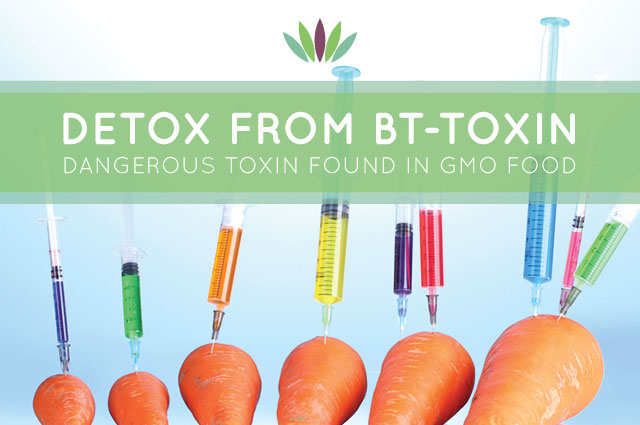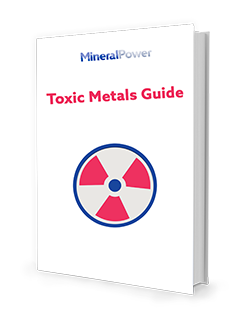Red Light Therapy – What Is It & Does It Actually Work?
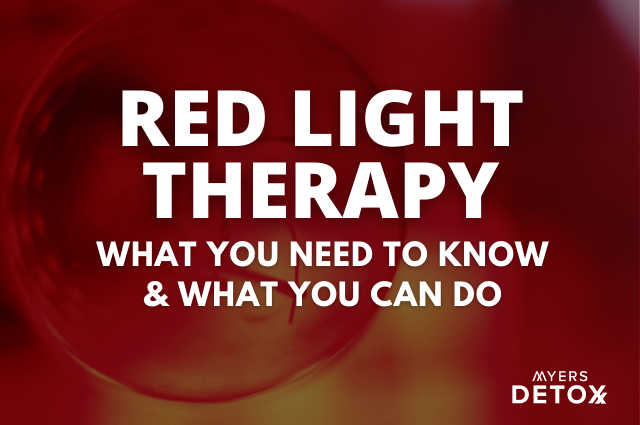
What if someone were to tell you that there was an easy way to support your skin health, mood, cognitive health, and pretty much your overall wellness?
Fortunately, red light therapy is one of the easiest and most advanced therapies you can do to support your health. It works for so many issues because it stimulates the production of stem cells and charges up our mitochondria to make energy for healing.
In fact, it has so many research-backed benefits that it would take a book to discuss them all. What is red light therapy, and how does it work?
In this article, you’ll learn:
- How healing red light impacts your body on a cellular level
- Why adding red light therapy to your health routine could change your life
- The myriad research-backed health benefits of red light therapy
- The simplest and most cost-effective way to start incorporating red light into your routine
What Is Red Light Therapy?
Red light therapy (RLT) is a type of therapeutic practice that uses red light frequencies from the UV spectrum, typically in the range of 600 to 900 nm wavelength.
This type of therapy can involve either red light or infrared light, each providing its own benefits due to their unique wavelengths. While red light is on the lower end of the spectrum (around 660 nm wavelength), infrared (like the rays you get from infrared saunas) is a longer wavelength light source, which is invisible to the human eye (around 830-850 nm).
Some of the most common forms of red light therapy include red light panels, infrared saunas, and red light lamps. Unlike tanning beds and other lamps that give off heat, red light and infrared light do not contain any of the UV rays that come from the sun. Instead, these wavelengths are able to gently penetrate the skin and bring about a range of health benefits.
How Does Red Light Therapy Work?
The beauty of red light therapy is in its simplicity. Due to the specific wavelengths that red light provides, your skin readily absorbs the light and takes in its therapeutic benefits.
What most people don’t realize is that your body contains a robust number of molecules that are light-sensitive (not just your eyes). In fact, every single cell in your body contains a compound called cytochrome that responds to light, in addition to the hemoglobin in your red cells, and myoglobin in your muscle cells.
With all of these light-hungry molecules in your body, it’s no surprise that red light therapy has been able to provide such a large range of benefits, which we’ll discuss in more detail below.
Perhaps the most well-researched mechanism behind red light therapy is the impact it has on the powerhouse of your cells, your mitochondria. Your mitochondria are responsible for generating energy to fuel your cells, tissues, and entire body. The healthier your mitochondria are, the more energy you have to carry out all of the essential processes in your body that keep you happy and healthy.
Cytochrome, as mentioned, can be found in every cell in your body. It plays an important role in converting light energy into cellular energy (also known as ATP or adenosine triphosphate) within the mitochondria[1]. As a result, your cells get a boost in fuel as your mitochondrial output grows stronger. In this way, your mitochondria quite literally act as solar panels for your body.
By enhancing mitochondrial function, light therapy, in effect, enhances cellular function – including repair and regeneration. This is why red light therapy is used to treat such a wide range of conditions; it provides benefits at the cellular level.
Research-Backed Benefits of Red Light Therapy
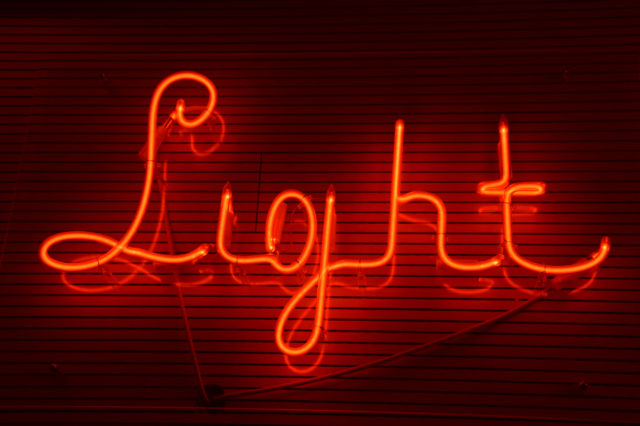
While you may be seeking out red light therapy for a specific condition, the impact of using this type of therapy can have is wide-ranging. Some of the most well-researched benefits include:
Skin Health
One of the most popular uses of red light therapy is for skin health and repair. Due to the ability of red light to penetrate into the skin, it has a direct impact on the health of your skin cells. For this reason, red light therapy is known to promote wound healing, collagen density, and the reduction of visible fine lines and wrinkles while reducing skin roughness and enhancing a smooth, youthful complexion[2].
Neurological Health
Red light therapy may improve several markers of neurological and emotional health due to the impact that these wavelengths have on neurons (brain cells).
For example, research shows that red light therapy can improve cognitive and emotional behavior[3]. Specifically, studies show that exposure to red light may reduce symptoms of anxiety and depression[4].
Furthermore, animal research shows that RLT may stimulate neuronal stem cell growth after traumatic brain injury, improving learning and memory. Other types of brain injury, such as peripheral nerve injury, also show promise with RLT[5][6]. I’ve even used it to reduce the inflammation from a concussion to improve the symptoms.
And finally, neurological conditions like Parkinson’s disease and Alzheimer’s may also see improvements with red light therapy due to improved neuronal activity[7][8].
Bone Density
Bone density naturally begins to decline as we age, which can lead to serious issues like osteopenia or osteoporosis. Research shows that red light can assist your bones in maintaining their integrity and stimulate the regeneration of bone tissue[9].
In the same vein, studies also show that RLT may promote the healing of bone fractures, enhancing callus formation and shortening the time it takes for the bone to repair[10].
Pain and Inflammation
Whether you’re dealing with an acute injury or have a chronic condition like arthritis, RLT has been shown to reduce inflammation, as well as the pain that goes along with it.
Studies show that in osteoarthritis, RLT can reduce the infiltration of inflammatory chemicals called cytokines while also reducing the level of pain that patients report[11][12][13].
The same is also shown to be true in the case of lower back pain and neck pain[14][15].
Other conditions which show research-backed improvements with red light therapy include:
- Migraines[16]
- Weight loss[17]
- Laryngitis[18]
- Peptic ulcers[19]
- Edema[20]
- Respiratory inflammation[21]
- Type 1 and type 2 diabetes[22]
- Pain from orthodontics[23]
- Hair regrowth[24]
- Acne[25]
- Heart damage[26]
- Fibromyalgia[27]
- Liver regeneration[28]
- Allergies[29]
- Candida[30]
- Macular degeneration[31]
- Tinnitus[32]
- Tissue repair[33]
- Carpal tunnel syndrome[34]
How To Get Started
There are several ways you can begin incorporating red light therapy into your routine.
There are a handful of companies that offer red light panels, but my personal favorite is the Therasage Tri-Light System.
For more information, check out my Web Class with Robby Besner of Therasage.
I’ve tried many of the red light products on the market, but this one checks all of my boxes:
- Lightweight
- Flexible (many panels are metal)
- Compact
- Uses both red light and infrared light
- Portable
- Provides a large treatment area
- Made with industry-leading technology
- Doctor approved
- Backed by research
What I really love about the Therasage Tri-Light System is that it’s one of the most affordable options out there, and the manufacturer is so confident in its capabilities that they offer a money-back guarantee.*
Takeaway
Red light therapy is becoming increasingly popular as more and more studies come out backing its wide-ranging benefits.
By enhancing the health of your body on a cellular level and generating stem cells, RLT is able to mitigate and improve many health conditions with just one simple protocol.
Making a small investment in my Therasage Tri-Light System is one of the best decisions I’ve made. For more information, check out my Web Class with Robby Besner of Therasage.
*Disclaimer: These statements have not been reviewed by the FDA. The Therasage Tri-Light System is not intended to diagnose, treat, cure, or prevent any disease. It is not intended to replace any medication or healing modality prescribed by your medical doctor.
Click Here for References+
- Tafur, Joseph, and Paul J. Mills. “Low-intensity light therapy: exploring the role of redox mechanisms.” Photomedicine and laser surgery 26.4 (2008): 323-328.
- Wunsch, Alexander, and Karsten Matuschka. “A controlled trial to determine the efficacy of red and near-infrared light treatment in patient satisfaction, reduction of fine lines, wrinkles, skin roughness, and intradermal collagen density increase.” Photomedicine and laser surgery 32.2 (2014): 93-100.
- Barrett, Douglas W., and F. Gonzalez-Lima. “Transcranial infrared laser stimulation produces beneficial cognitive and emotional effects in humans.” Neuroscience 230 (2013): 13-23.
- Schiffer, Fredric, et al. “Psychological benefits 2 and 4 weeks after a single treatment with near infrared light to the forehead: a pilot study of 10 patients with major depression and anxiety.” Behavioral and brain functions 5.1 (2009): 1-13.
- Rochkind, Shimon. “Phototherapy in peripheral nerve regeneration: From basic science to clinical study.” Neurosurgical Focus 26.2 (2009): E8.
- Xuan, Weijun, et al. “Transcranial low-level laser therapy enhances learning, memory, and neuroprogenitor cells after traumatic brain injury in mice.” Journal of biomedical optics 19.10 (2014): 108003.
- Trimmer, Patricia A., et al. “Reduced axonal transport in Parkinson’s disease cybrid neurites is restored by light therapy.” Molecular neurodegeneration 4.1 (2009): 1-11.
- Meng, Chengbo, Zhiyong He, and Da Xing. “Low-level laser therapy rescues dendrite atrophy via upregulating BDNF expression: implications for Alzheimer’s disease.” Journal of Neuroscience 33.33 (2013): 13505-13517.
- de Souza Merli, Luiz Antonio, et al. “The low level laser therapy effect on the remodeling of bone extracellular matrix.” Photochemistry and Photobiology 88.5 (2012): 1293-1301.
- Kazem Shakouri, Seyed, et al. “Effect of low-level laser therapy on the fracture healing process.” Lasers in medical science 25.1 (2010): 73-77.
- Jang, Ho, and Hyunju Lee. “Meta-analysis of pain relief effects by laser irradiation on joint areas.” Photomedicine and laser surgery 30.8 (2012): 405-417.
- Hamblin, Michael R. “Can osteoarthritis be treated with light?.” Arthritis research & therapy 15.5 (2013): 1-2.
- Gomes, Lessandra Esper Abdala, Eduardo Monguilhott Dalmarco, and Edison Sanfelice André. “The brain-derived neurotrophic factor, nerve growth factor, neurotrophin-3, and induced nitric oxide synthase expressions after low-level laser therapy in an axonotmesis experimental model.” Photomedicine and laser surgery 30.11 (2012): 642-647.
- Chow, Roberta T., et al. “Efficacy of low-level laser therapy in the management of neck pain: a systematic review and meta-analysis of randomised placebo or active-treatment controlled trials.” The Lancet 374.9705 (2009): 1897-1908.
- Yousefi‐Nooraie, Reza, et al. “Low level laser therapy for nonspecific low‐back pain.” Cochrane Database of Systematic Reviews 2 (2008).
- Allais, G., et al. “Non-pharmacological approaches to chronic headaches: transcutaneous electrical nerve stimulation, lasertherapy and acupuncture in transformed migraine treatment.” Neurological Sciences 24.2 (2003): s138-s142.
- Caruso-Davis, Mary K., et al. “Efficacy of low-level laser therapy for body contouring and spot fat reduction.” Obesity surgery 21.6 (2011): 722-729.
- Marinho, Renata R., et al. “Potential anti-inflammatory effect of low-level laser therapy on the experimental reflux laryngitis: a preliminary study.” Lasers in medical science 29.1 (2014): 239-243.
- Burduli, N. M., and S. K. Gutnova. “The influence of low-intensive laser therapy on the aggregation properties of thrombocytes in patients with peptic ulcer.” Klinicheskaia Meditsina 84.2 (2006): 61-64.
- Albertini, R., et al. “Anti-inflammatory effects of low-level laser therapy (LLLT) with two different red wavelengths (660 nm and 684 nm) in carrageenan-induced rat paw edema.” Journal of Photochemistry and Photobiology B: Biology 89.1 (2007): 50-55.
- Oliveira Jr, Manoel Carneiro, et al. “Low level laser therapy reduces acute lung inflammation in a model of pulmonary and extrapulmonary LPS-induced ARDS.” Journal of Photochemistry and Photobiology B: Biology 134 (2014): 57-63.
- Longo, Leonardo, et al. “The effects of Low Level LASER Therapy (LLLT) on blood glucose levels in patients with Diabetes Mellitus type I: a case report.” AIP Conference Proceedings. Vol. 1142. No. 1. American Institute of Physics, 2009.
- Fujiyama, Koji, et al. “Clinical effect of CO2 laser in reducing pain in orthodontics.” The Angle Orthodontist 78.2 (2008): 299-303.
- Avci, Pinar, et al. “Low‐level laser (light) therapy (LLLT) for treatment of hair loss.” Lasers in surgery and medicine 46.2 (2014): 144-151.
- Aziz-Jalali, Mir Hadi, Seyed Mehdi Tabaie, and Gholamreza Esmaeeli Djavid. “Comparison of red and infrared low-level laser therapy in the treatment of acne vulgaris.” Indian journal of dermatology 57.2 (2012): 128.
- Manchini, Martha Trindade, et al. “Amelioration of cardiac function and activation of anti-inflammatory vasoactive peptides expression in the rat myocardium by low level laser therapy.” PLoS One 9.7 (2014): e101270.
- Ruaro, J. A., et al. “Low-level laser therapy to treat fibromyalgia.” Lasers in medical science 29.6 (2014): 1815-1819.
- Oron, U., et al. “Enhanced liver regeneration following acute hepatectomy by low-level laser therapy.” Photomedicine and laser surgery 28.5 (2010): 675-678.
- Choi, Binhye, et al. “Effects of low level laser therapy on ovalbumin-induced mouse model of allergic rhinitis.” Evidence-Based Complementary and Alternative Medicine 2013 (2013).
- Maver-Biscanin, Mirela, Marinka Mravak-Stipetic, and Vjekoslav Jerolimov. “Effect of low-level laser therapy on Candida albicans growth in patients with denture stomatitis.” Photomedicine and Laser Therapy 23.3 (2005): 328-332.
- Ivandic, Boris T., and Tomislav Ivandic. “Low-level laser therapy improves vision in patients with age-related macular degeneration.” Photomedicine and laser surgery 26.3 (2008): 241-245.
- Mollasadeghi, Abolfazl, et al. “Efficacy of low-level laser therapy in the management of tinnitus due to noise-induced hearing loss: a double-blind randomized clinical trial.” The Scientific World Journal 2013 (2013).
- Ferraresi, Cleber, Michael R. Hamblin, and Nivaldo A. Parizotto. “Low-level laser (light) therapy (LLLT) on muscle tissue: performance, fatigue and repair benefited by the power of light.” Photonics & lasers in medicine 1.4 (2012): 267-286.
- Lazovic, Milica, et al. “Placebo-controlled investigation of low-level laser therapy to treat carpal tunnel syndrome.” Photomedicine and laser surgery 32.6 (2014): 336-344.

